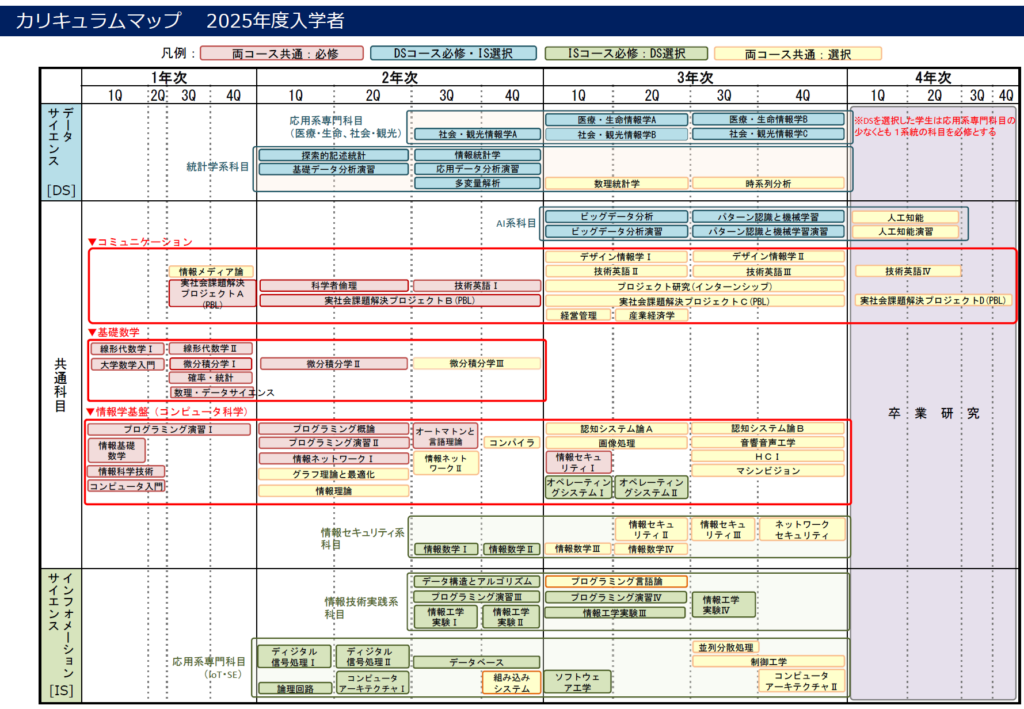
教育
EDUCATION
EDUCATION
コース紹介
情報科学とデータ科学、どちらのコースを選択しても
両方学べます
情報データ科学部では、まず共通基礎科目として数学的思考・スキル、コンピューターやプログラミングの基礎、コミュニケーション関連科目で他者との協働を学びます。2年次では共通科目に加え、自分の希望にあわせてISコースかDSコースを選択し、各コースで想定される進路に向けて、さらに専門性を強化するカリキュラムになっています。コース選択の違いは、各科目の履修が必修か選択かの違いで、どちらのコースを選択しても他方の科目を履修できますので、自分の学びをさらにカスタマイズできます。

ISコースInformation Science course
コースの特徴
高度な情報科学の知識を生かし、AI化が進むシステムや
ロボットの開発に貢献できるエンジニアを養成します。
履修モデル
- ソフトウェア工学
- データベース
- コンピュータアーキテクチャ
- コンピュータアーキテクチャ
- 情報メディア
- 制御工学
- 組み込みシステム
- 情報セキュリティ
- 情報数学
- 暗号理論
- 情報ネットワーク
必要とされる
分野
分野
IT分野及びITを必要とする企業、自治体、官公庁での活躍が期待できます
- 新サービス創成、情報システム企画立案、情報システム開発、情報セキュリティ推進
DSコースData Science course
コースの特徴
実際の社会課題に対し、データから具体的な解決策を提案できる
データサイエンティストを養成します。
履修モデル
- 探索的記述統計
- 情報統計
- データ分析演習
- ビッグデータ解析
- 統計的機械学習
- 人工知能
- 医療・生命情報学
- パイオインフォマティクス
- 社会・観光情報学
- 社会政策
- 行動学
必要とされる
分野
分野
様々な問題の解決や新たな価値の創造に貢献する幅広い分野での活躍が期待できます
- 観光振興・地方創生政策、顧客データ分析・活用、新薬創出、病理診断、リモート診断
IS系専門科目
情報科学
- 情報数学
- 論理回路
- データベース
- ソフトウェア工学
- ディジタル信号処理
- データ構造とアルゴリズム
- オペレーティングシステム
- コンピュータアーキテクチャ

DS系専門科目
データ科学
- 機械学習
- パターン認識
- ビッグデータ
- 医療・生命情報
- 社会・観光情報
- 情報統計
- データ分析
- 多変量解析

共通科目
- 基礎数学
- コミュニケーション
- 数理・データサイエンス
- AI
- 技術英語
- 情報ネットワーク
- コンピュータ科学
- 情報セキュリティ
- プログラミング

